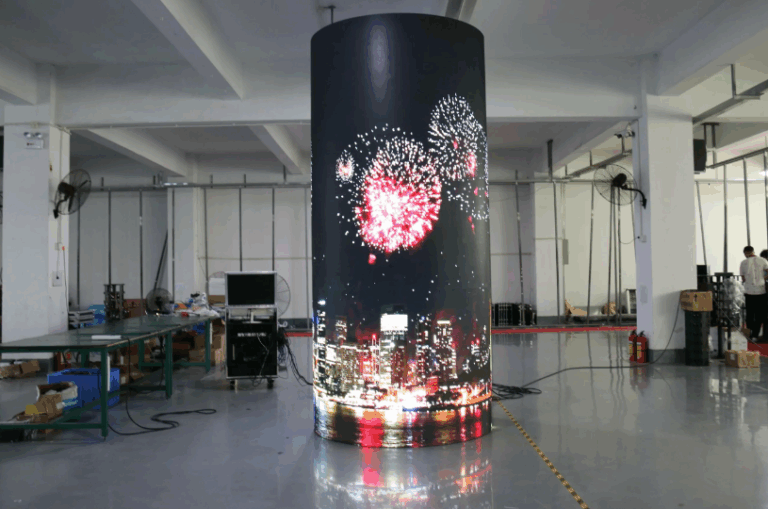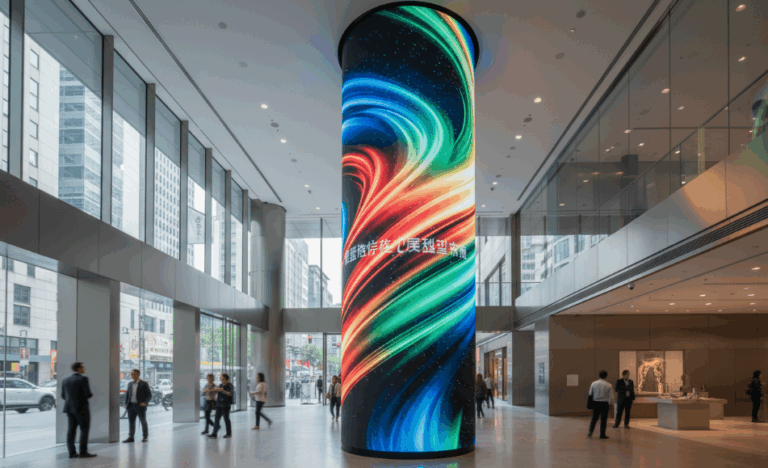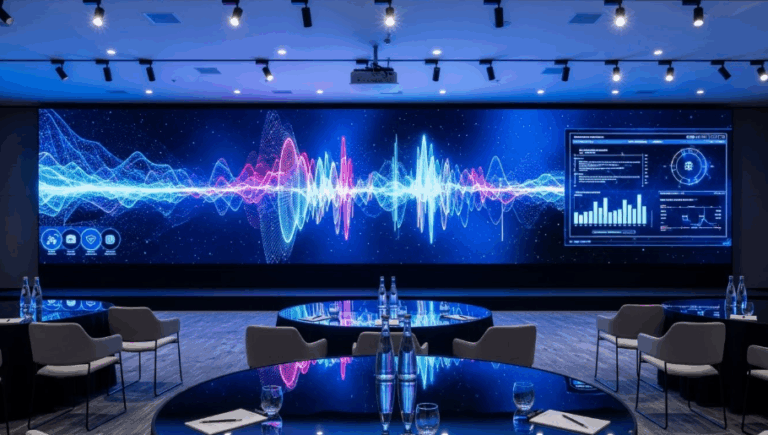Table of Contents:
-
What is an LED Floor Display?
-
How Does It Work?
-
Unique Advantages of LED Floor Displays
-
Application Scenarios
-
How to Choose the Right LED Floor Display?
-
Reference Pricing
-
Frequently Asked Questions (FAQ)
-
Conclusion
As immersive experiences and creative visual needs continue to grow, LED floor displays have become the new favorite in stages, exhibitions, and commercial complexes. Imagine walking across the floor of a shopping mall and suddenly seeing rippling waves or twinkling stars beneath your feet—that’s the unique experience LED floor displays bring.

1. What is an LED Floor Display?
An LED floor display, also known as an LED floor screen, is a type of LED display designed specifically to be walked on. It can showcase dynamic visuals while supporting the weight of people—and even vehicles. While its core structure resembles traditional LED screens (with LED beads, driver ICs, circuit boards, enclosures, and power supplies), it’s specially reinforced in terms of packaging, structure, and control systems for floor-level usage.
2. How Does It Work?
LED floor displays are equipped with built-in sensors (such as pressure or infrared) to create interactive visual effects. When a person steps on the screen, effects like “rippling water,” “flames,” or “footstep tracking” appear, enhancing engagement.
Comparison with Traditional LED Screens:
| Dimension | Traditional LED Display | LED Floor Display |
|---|---|---|
| Installation | Wall-mounted, stage wall | Ground |
| Load-bearing | Standard | High (≥1 ton/m²) |
| Surface Material | Resin or acrylic | Reinforced anti-slip PC layer |
| Protection Rating | Around IP54 | IP65 or above |
| Interactivity | None | Sensor-enabled interactions |
3. Unique Advantages of LED Floor Displays
-
Immersive Experience: Transforms the floor into a large interactive canvas, enhancing spatial engagement.
-
High Safety: Anti-slip surface and load-bearing design ensure safety even in high-traffic areas.
-
Multi-functionality: Integrates with sensors to support interactive games, navigation, and more.
-
Commercial Value: Effectively attracts foot traffic, enhances brand image, and boosts sales.
-
Durability: Special materials and manufacturing ensure a long lifespan and low failure rate.
4. Application Scenarios
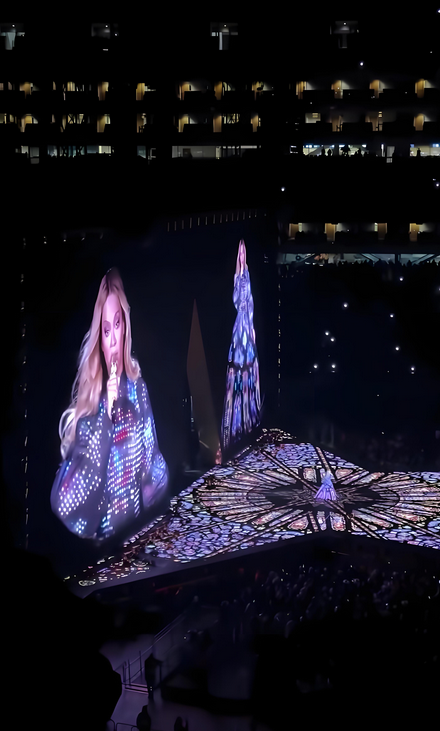
-
Stage Performances: Concerts, galas, and launch events for creating immersive and interactive stage effects.
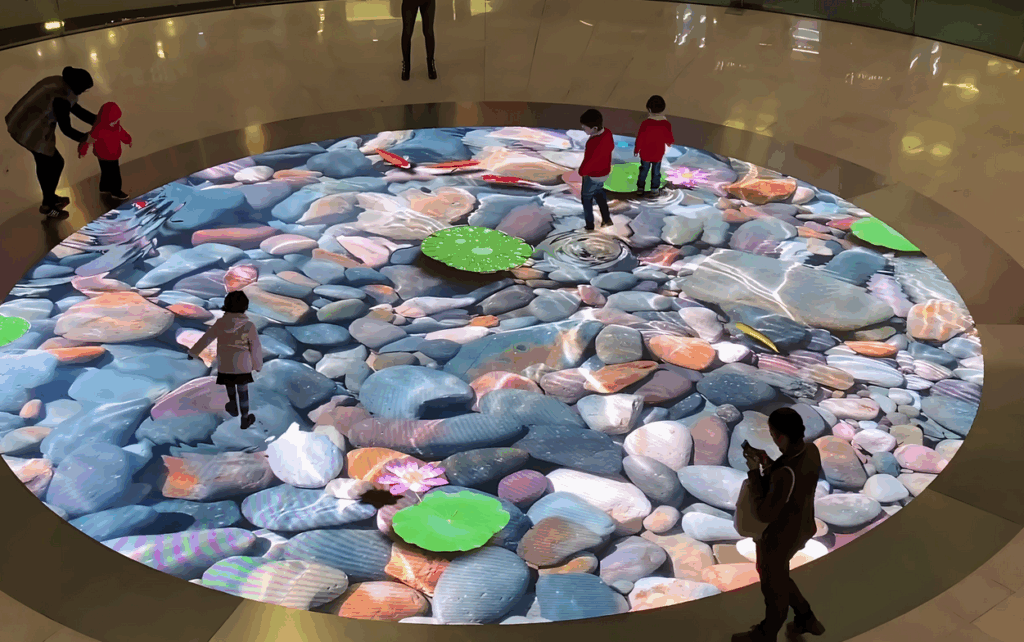
-
Commercial Displays: Shopping malls, flagship stores, and showrooms to showcase products and draw attention.
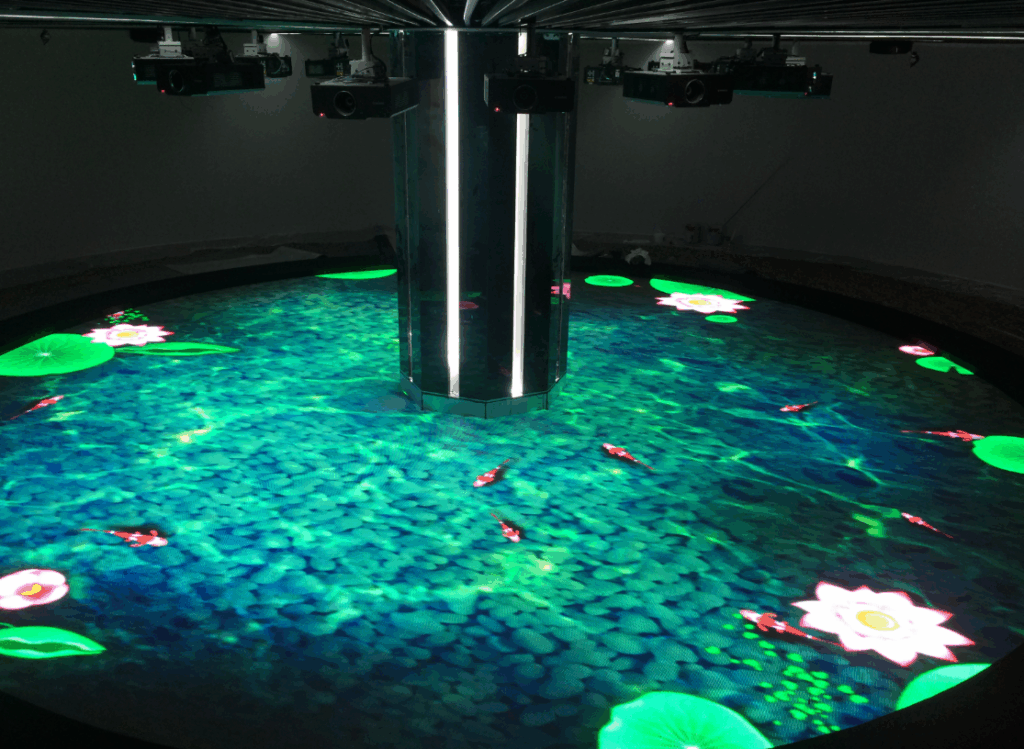
-
Exhibitions & Museums: Science centers, museums, and art exhibits for immersive and interactive experiences.
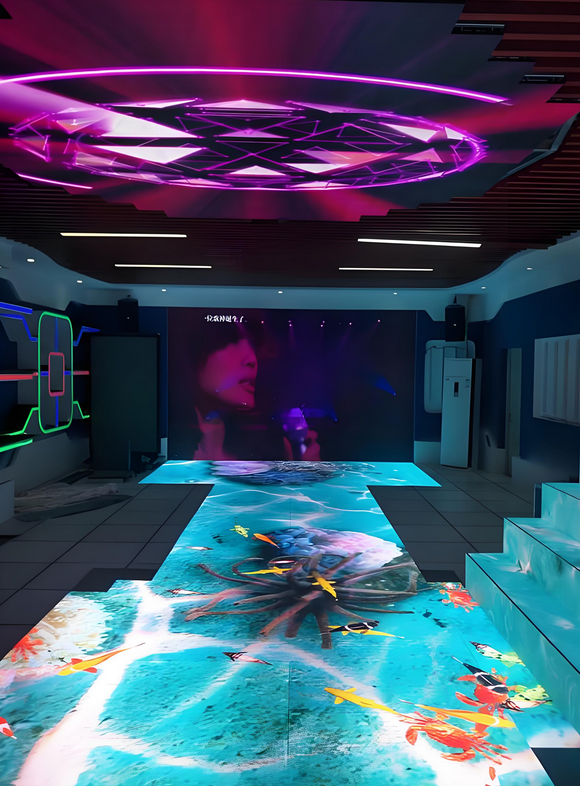
-
Entertainment Venues: Bars, KTV lounges, theme parks, and kids’ playgrounds for cool floor effects and fun vibes.
5. How to Choose the Right LED Floor Display?
Based on Usage Needs:
-
Indoor or Outdoor? Outdoor displays require higher protection ratings and brightness.
-
Load Capacity? High-traffic or vehicle-access areas need stronger load-bearing capabilities.
-
Need for Interactivity? Choose sensor-equipped screens for foot-responsive effects.
-
Resolution Requirements? The smaller the pixel pitch (P value), the higher the resolution.
Key Technical Specs:
-
Brightness: 2000–3000 nits for indoor use, 4500+ nits for outdoor visibility.
-
Refresh Rate: Higher refresh rates offer smoother visuals.
-
Gray Scale: Affects color performance and image detail.
-
IP Rating: IP4X minimum for indoor; IP65+ recommended for outdoor.
-
Load Capacity: Clearly confirm max static and dynamic load/m².
-
Slip Resistance: Crucial for safety.
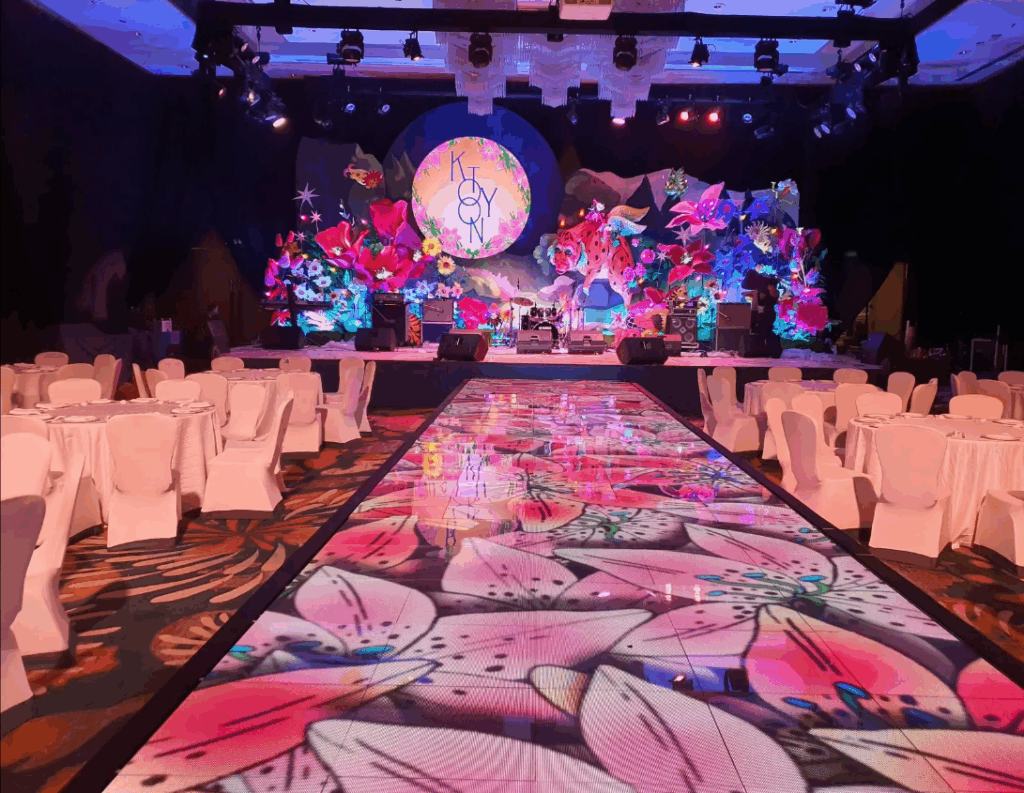
Brand & Quality:
-
Go with reputable brands with proven technology and solid after-sales support.
-
Look for third-party certifications (e.g., CE, RoHS, FCC) to ensure compliance.
Budget Planning:
Set a clear budget early. This helps narrow down suppliers and product models.
6. Reference Pricing (USD/m²)
| Type | Pixel Pitch | Interactivity | Price Range |
|---|---|---|---|
| Standard | P4.81 | No | $500 – $800 |
| HD | P3.91 | No | $700 – $1000 |
| Interactive | P3.91 | Yes | $1000 – $1400 |
| Premium | P2.9 | Yes | $1500+ |
Sources: TrendForce LEDinside, Sostron.com, Made-in-China, Alibaba, etc.
Note: Prices vary based on market changes, tech upgrades, and supplier strategies. Always get quotes from 3–5 professional suppliers and factor in after-sales and maintenance costs when budgeting.
When requesting quotes, clearly state your needs: indoor/outdoor use, rental or permanent install, size, pixel pitch, and budget range. This helps suppliers offer accurate quotes.
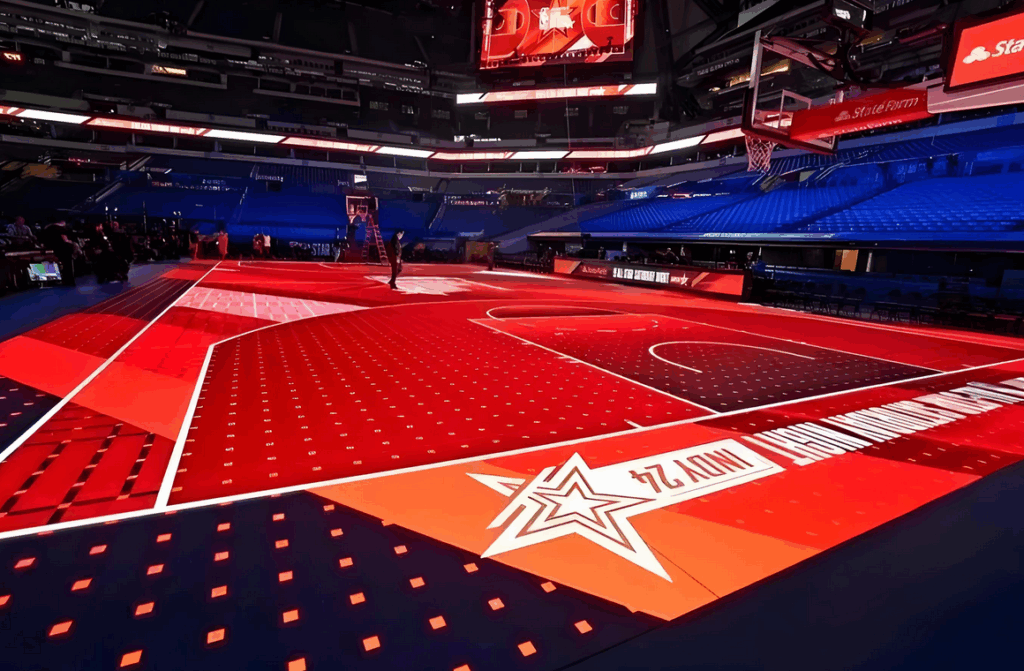
7. Frequently Asked Questions (FAQ)
Is the LED floor display slippery?
No. Most units feature anti-slip surfaces like frosted acrylic or custom PC covers for good grip, even in wet conditions.
How much weight can it bear?
Standard models can handle over 1 ton/m²—enough for people, props, and small vehicles. Some custom models support over 2 tons.
What is the typical lifespan?
50,000–100,000 hours, or 6–10 years under normal use. Lifespan depends on LED chip quality, power stability, and routine maintenance.
Is it expensive to maintain?
Not really. Common issues (e.g., broken LEDs or power modules) can be fixed with modular replacements. Look for products with front maintenance and hot-swappable parts to reduce downtime and labor costs.
8. Conclusion
LED floor displays are transforming event spaces and commercial venues with interactivity, creativity, and immersive visuals. With improving technology and decreasing costs, these screens are no longer just for big-budget stages—they’re becoming staples in retail, entertainment, and urban design.
Whether you’re a project contractor, brand owner, or exhibition organizer, choosing the right LED floor display can unlock powerful new possibilities.
Need help picking a model or supplier? Don’t hesitate to ask—we’re here to guide you through.

About Dylan Lian
Marketing Strategic Director at Sostron



